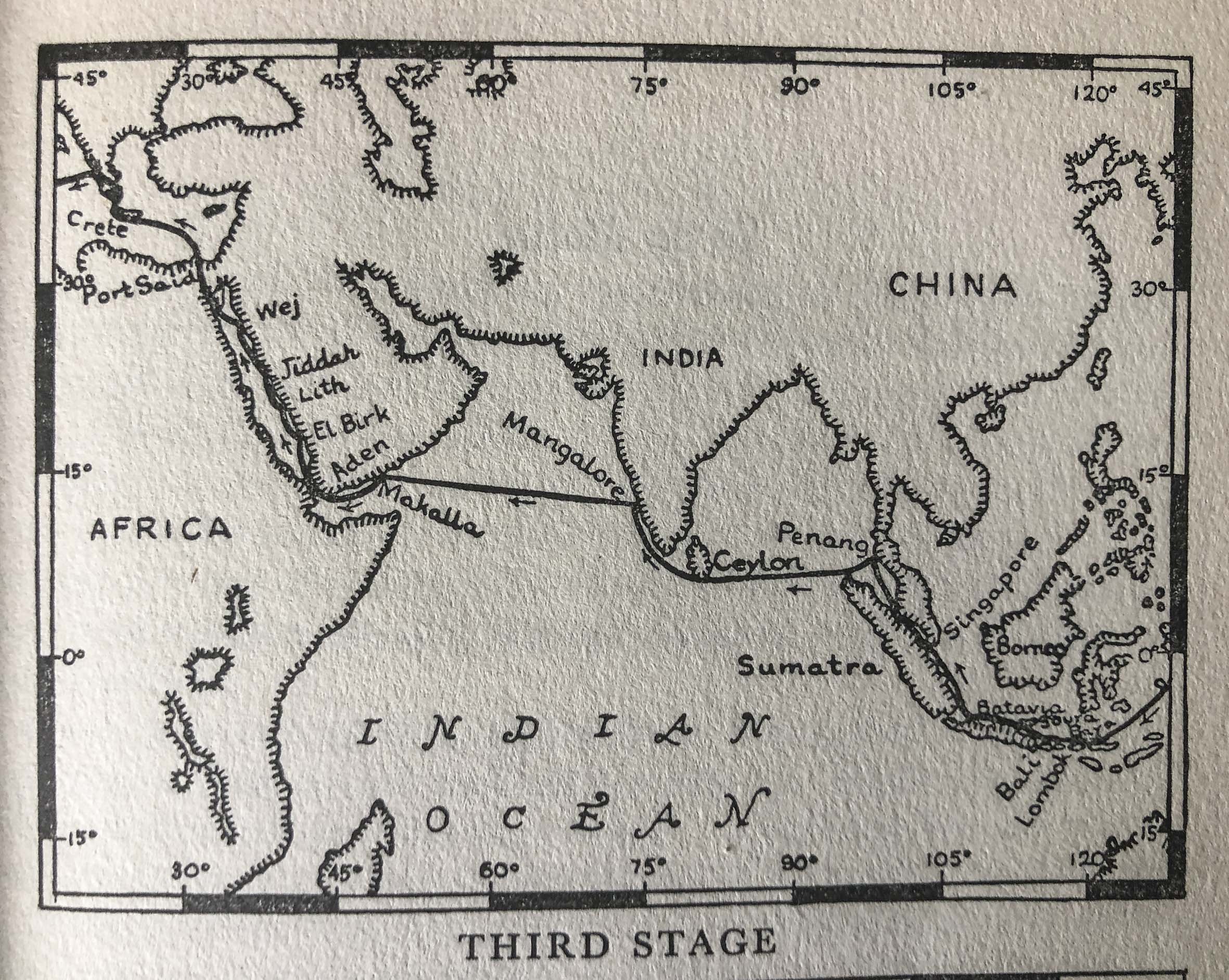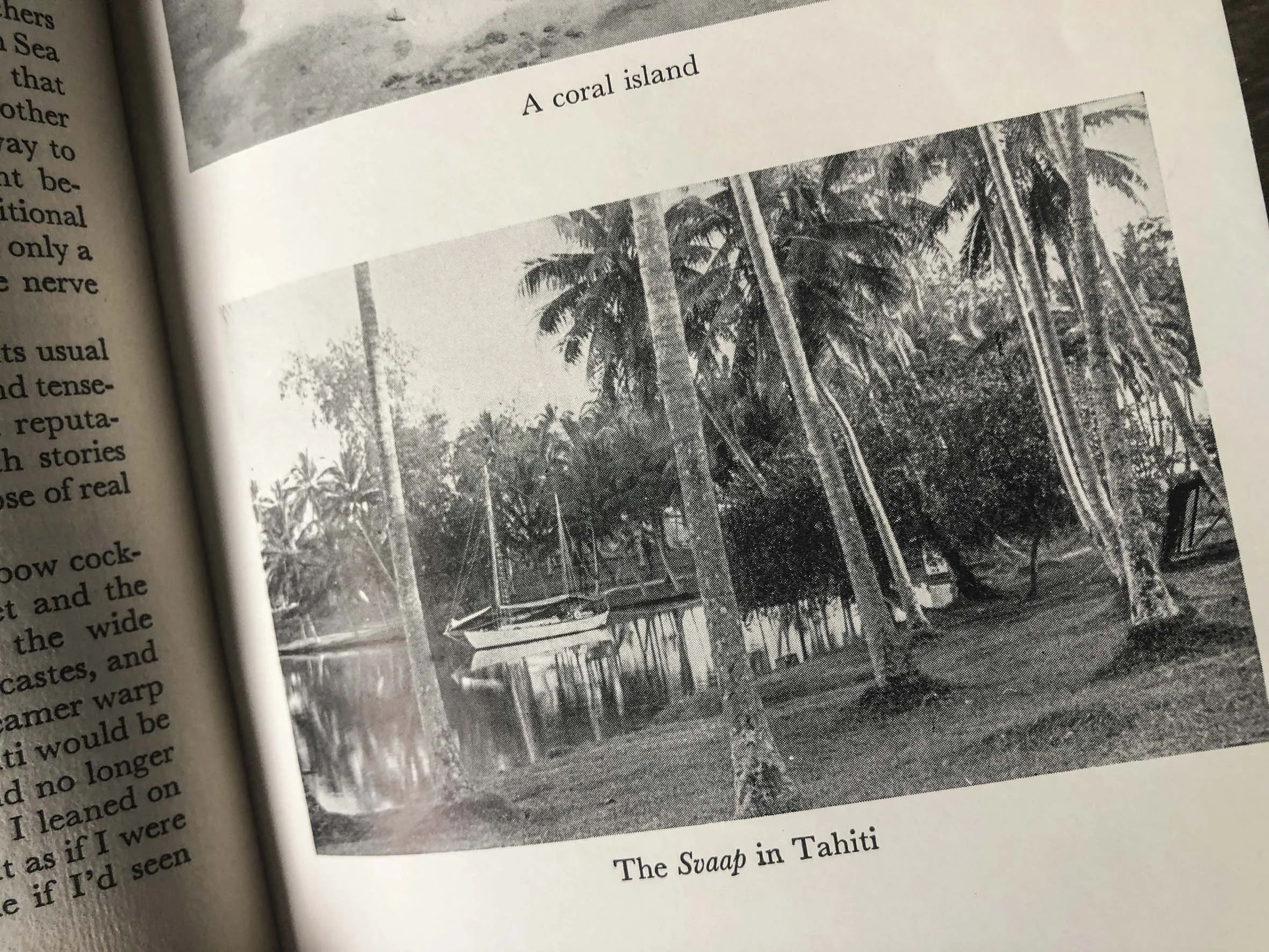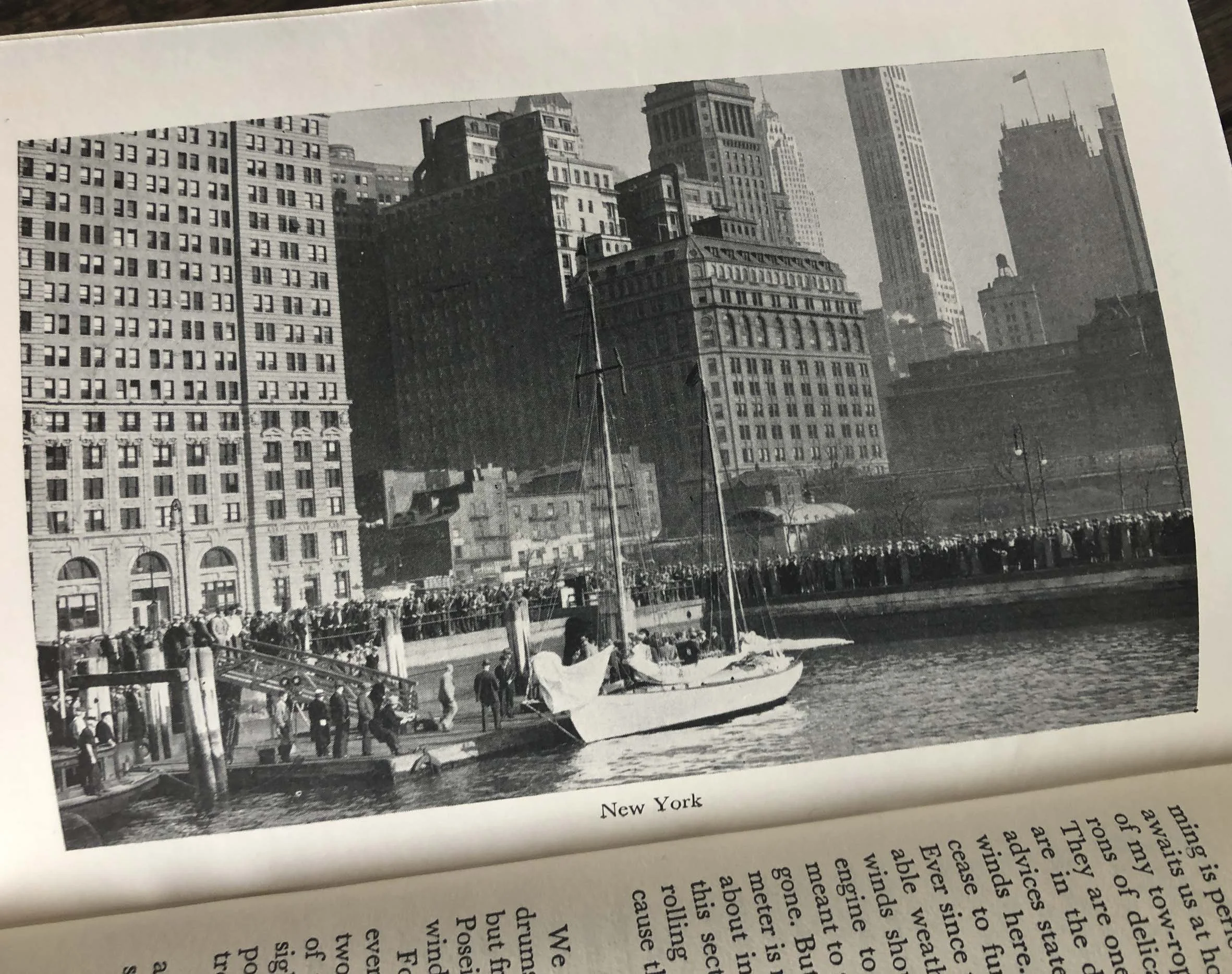“Deep Water and Shoal”- 90 years on.
In 1934 J.C. Squire wrote for the London Daily Telegraph his review of “Deep Water and Shoal”
There have been men before who have gone round the world, or as nearly as doesn't matter, in small sailing boats. There was Alain Gerbault and there was Capt. Slocum. But no one has ever written a book about sailing round the world as good as Mr. Robinson's... It is one of the most entrancing travel books ever written. It is so good that at this moment, late at night in a London club, I feel like "cashing in" all my available resources, abandoning my home and family, and starting out to sail round the world in a thirty foot boat, so seaworthy that it won't matter, if I go below to sleep for eight hours, lashing the helm and trusting to the Trades'
William Albert Robinson (1902 –1988) was an American sailor and author who circumnavigated on a small yacht between 1928 and 1931. The 32ft 6in SVAAP, which means “dream” in Sanskrit, was designed by John Alden, and built in 1925 in Nova Scotia. As Squire points out he wasn’t the first. He also wasn’t in the quickest. But one gets the feeling that he was the most honest in his recounting of his adventure, and perhaps the most enlightened in his attitudes.
(Click to Enlarge)
There seems to be a long tradition in the telling of maritime adventures of, let’s call it….embellishment. I personally find a note of inauthenticity in perhaps the most revered early circumnavigator, Slocum. Some people like Tristan Jones, just blatantly made stuff up! Even writers like Jonny Wray (South Sea Vagabonds) and Erling Tambs (The Cruise of the Teddy) who I enjoy enormously, are prone to gloss over the emotionally and politically difficult issues. Perhaps this holds a mirror to a time when “real men” didn’t express their opinions on anything other than practical matters. But Robinson doesn’t shy away from telling us of his fears, his unfettered delights and his opinions of all manor of human and physical discoveries as he sailed around the world. I don’t mean for him sound judgemental… I just find that calling out injustice at a time when colonial domination was the status quo is refreshing.
1930- New Guinea
‘A mission there had a grand idea. The natives were making their copra. They were told that they must make one sackful for Christ for each sack of their own. This would prove the sincerity of their religion and would help counteract their worldly sins, which might otherwise cause them to be tortured in Hell after death. (Hell, in this case, was the live volcano, Manam, which steamed away a few miles off the coast.) The mission would collect the copra later and see that it was safely delivered to its holy recipient.’
‘One day a schooner came to anchor just off the main village. A strange figure stood on deck in a flowing night-gown. He wore a beard and long hair. Unless you looked closely you would not have noticed that the hair was teased hemp, dyed.’
‘Rumour spread far and wide that the stranger was Jesus Himself come for His copra. All-day the schooner laid there and all day a procession of loaded canoes propelled by awed natives made it’s (sic) way alongside. When the ship could hold no more, she sailed away over the horizon, full of Christ’s copra.’
Robinson was also an impressive sailor. Always striving to get the most out of his yacht, and as keen on sailing during the last leg of the voyage as on the first. He achieved some excellent daily runs, once logging 190 miles from noon to noon and more than 175 miles on a number of days. On an ocean passage to get an average speed of between 7 and 8 knots for twenty-four hours out of a yacht less than 30 feet on the water-line is impressive.
But perhaps what makes Robison’s journey so special, is not his societal observations or impressive sailing achievements but his almost naive joy, at the prospect and execution of adventure. Two passages spring to mind. A Journey up the Sepik River in New Guinea and an encounter with the “Dragons” on Komodo.
On Komodo Island 1930
“The streams and waterfalls of Komodo were all dry: and our tank was almost empty. So we had to leave sooner than we wished. On the last day I climbed the highest mountain of Komodo. The magnificent view and cooler air on top partially rewarded me for the heart-breaking climb that any respectable mountain goat would have refused.
I learned that day what thirst can be -the craving maddens- for the terrific heat reflected from burnt slopes, shale and lava was worse than anything I have ever encountered.
Returning late by moonlight, I followed the pig and deer trail through the bush and sometimes the dust-dry riverbeds. And later reached the vicinity of our big bait boar.
Somewhat lost, I searched for the spot, suddenly becoming aware of a strong odour.
The whole place was so alive with pigs and deer that the valley smells like a stockyard. That this was another smell .Putting it down to the ripening carcass of the bait, I followed it to sit and watch a bit for Varanus. Then I remembered reading of the peculiar odour emitted by the dragons, and at the same instant realise that this was no smell of dead boar but something alive, something strange to my senses.
I stood stock still, but her nothing. Creeping on I reached the sandy hollow of a dry creek bed, and quietly peered through the brush to receive the shock of my life. Their- monstrous in the moonlight -was a giant dragon lizard, cheering twice my own height above me.
My reason told me that it was Varanas, but my imagination (and it was by far the stronger at the moment), told me differently.
It said in a voice that pounded in my brain that I was not in the 20th century. But back in the dim primaeval ages. I was staring forth at a monster dinosaur. He was suspicious standing way up on his hind legs and resting on his long scaly tail. He's swayed a bit back and forth. Evidently he'd already devoured the boar for his belly was like a huge distended balloon.
I did not breathe but he was aware of my presence. Suddenly, when the moonlight reflected from his scales in fantastic design, he whirled with lightning speed and disappeared into the black jungle. But my visit to Komodo was complete. This was too much a climax to remain longer. It was the impression I wished to keep for always. For a brief few minutes, I have lived in a prehistoric era, and had felt the thrill and fear that the caveman felt when facing those great monsters of old.
We sailed from Komodo at the hour of midnight.”
1930- At the Mouth of the Sepik
“I had been hearing more and more about the tribes of the Sepik and yearned to make this trip. Only with the help of General Wisdom would it have been possible. I am indebted to this final gentleman for one of the greatest adventures of my life.
We approached the mouth of this great stream on Saturday August 9. Three smoking active volcanoes were in sight all day. Isolated cones sticking out of the sea.
The low lying Sepik land did not appear until we were close by. We came first to a wide band of yellow water, indicating the mouth of the big Ramu River. Then more blue water and at last the absolutely distinct line of yellow of the Sepik.
It is remarkable how the waters rush out to sea for miles without mixing with the ocean. There is a perfect line of demarcation as if a block of transparent blue glass were placed against a block of yellow wood. One can see just before entering the yellow, several fathoms deep in the blue-noting the dirt and rubbish moving along the line of contact.
We got Bam Island, (what a name) astern northeast and steered for the mouth of the river. The left bank was low with small growth, but the right-hand shore was graced by high casuarinas looking like grown up Christmas trees, decidedly out of place here.
We battled the current to our anchorage off a native village just inside the entrance, making only a mile in just an hour under sail and our huge hornbills, herons, parrots, and many unknown birds flew all about and perched in the trees along the shore.
Then a dozen long narrow canoes (paddled by standing naked black men) came out to meet us.. The men wore their hair, which was shaved far back from their forehead, in a long cylinder at the back of the head.
The village ashore perched on stilts, with great projecting roofs presented a scene of great activity. The mighty river rushed past, girdling along our planks. Although somewhat replete with natives who had become rather than matter of fact, I had the feeling of expectancy, a thrill that was greater than I had experienced for long and I felt that we were on the eve of a great adventure. This unknown river of rivers, savage in the wild Stone Age, surely holds romance for the most sophisticated of explorers.”
Spectators welcoming Robinson on his arrival at New York in November 1931
“Deep Water and Shoal” is out of print but some beautiful second hand versions can be found for sale on line. Or if anyone is desperate I have a spare copy!









